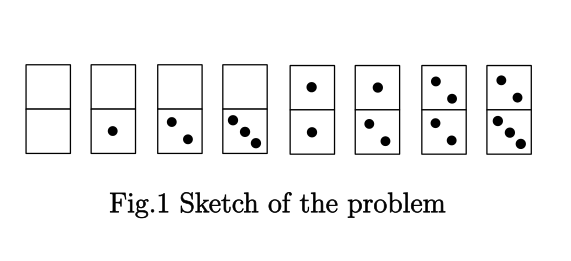I've found this problem in an older book which goes by the name of Logical aptitude circa 2019. It doesn't list any other markings. The thing is no matter how I attempt to look into it, I'm trapped in circles as I have no idea on how to approach this problem.
The problem is as follows:
The figure from below shows a set of different domino pieces. By using only 4 of these pieces you can make a 4x4 magic square. Find the sum of the dots situated in the diagonal of the magic square.
I've went to the source again and it doesn't give any other details or conditions for this problem. However from looking other similar problems which I had solved, the intended approach is that some squares will be left blank and its only allowed to use the pieces once.
The alternatives given in the sheet are as follows:
- 6
- 5
- 4
- 8
Logically what I attempted to do was trial and error. But after several attempts I couldn't come to a method to make the requested magic square.
Recalling an older classes on this particular subject I remembered that Bachet de Méziriac's diamond method proposed a way to fill in the gaps of a magic square with the identity that the square in the center is the half of the sum of the two opposing vertex of the square.
By the way, to illustrate what I meant with the method. It goes as this:
As mentioned above it seems to work using an empty 3x3 table to make a magic square but that's it. How can this puzzle be solved?. It would help a lot if an answer would contain some sort of picture or a detailed step by step analysis on how to approach this sort of question in a systematic and logical manner so I can fill in the blanks without just plugin numbers randomly.



